 An Antarctica Adventure with Our Wildfoot Expert
An Antarctica Adventure with Our Wildfoot Expert
A trip of a lifetime: the spectacular Greg Mortimer and Kayaking in Antarctica

Wildfoot Travel Advisor Debbie Grainger boarded an expedition cruise to Antarctica recently. Here, she gives us a first hand account of her Antarctica adventure – complete with kayaking.
I have just returned from the most amazing trip to the Antarctic peninsula. Friends and family asked me why I was so excited to be travelling to this far-away frozen planet. My answer? I loved the Arctic and all it has to offer, but people tell me daily that Antarctica is the most impressive, emotion-evoking continent you can only vaguely imagine. If you’ve been there, then you’ll know exactly what I mean – if you haven’t, then what are you waiting for? An Antarctica adventure is everything it promises to be and so much more. There wasn’t one day that I didn’t gasp in awe at the beauty, the wilderness and the wildlife.
Following a night in Buenos Aires and another in Ushuaia, our adventure really began as we stepped onboard the Greg Mortimer. My daughter, who was travelling with me, suggested at 6am on the morning of embarkation, that we go for a run from our hotel down to the port, to get our first glimpse of this much-talked about ship. So, we threw our running gear on and ran the 5km to the port and there she was. All shiny and white and sparkling in the early morning sunshine, standing in her glory against the backwash of blue skies and snowy, white mountain peaks in the background.
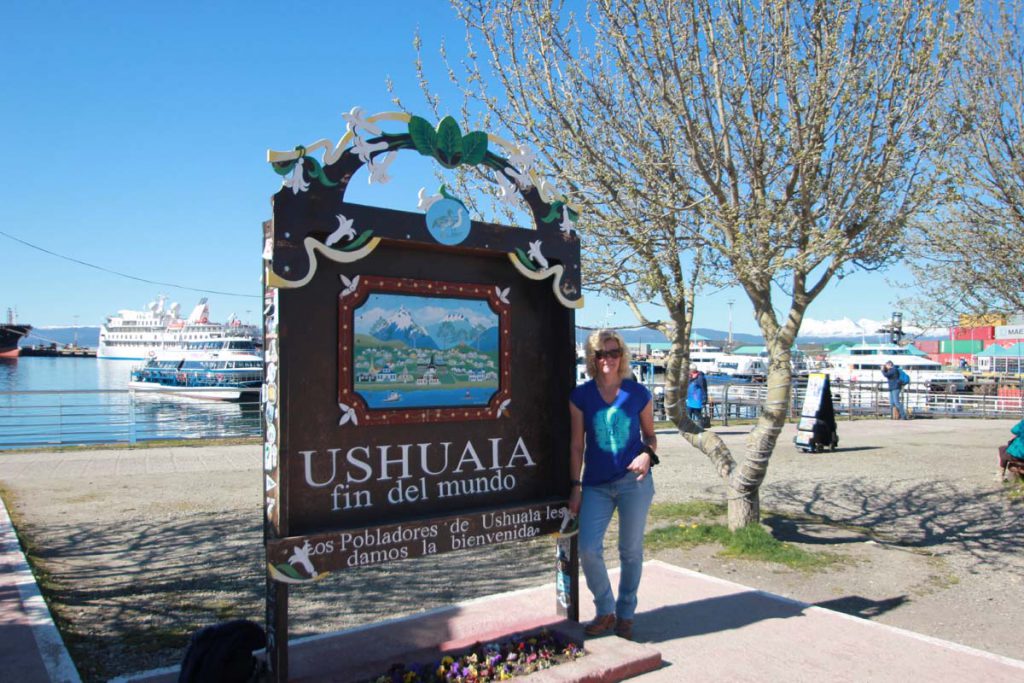
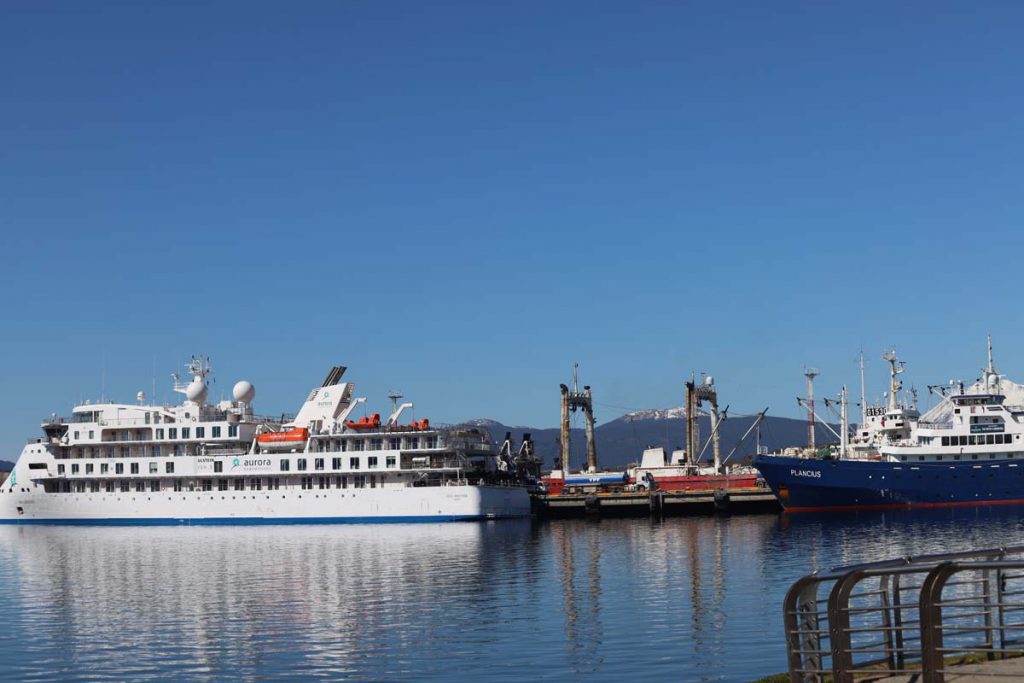
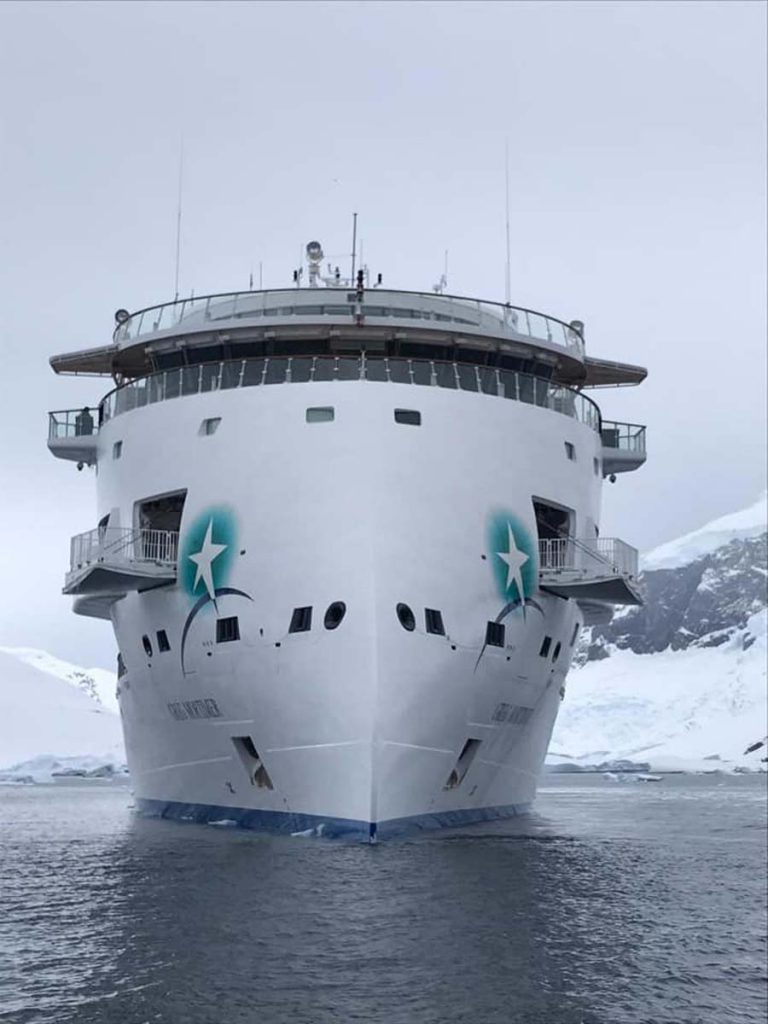
When we boarded later that day to begin our Antarctica adventure, we were greeted individually by a member of staff and shown to the cabin. Ours was a porthole cabin on Deck 3, which can take three passengers in either a large double bed and a single sofa bed, or two single beds plus the sofa bed. The cabin was tastefully decorated and had great storage options; with a triple wardrobe and bedside cabinets, storage under the beds, plus two more cupboards and four more drawers. There is also a desk area with a mirror, and a large smart TV where you can access the daily programme, view what the bridge can see or simply watch TV.
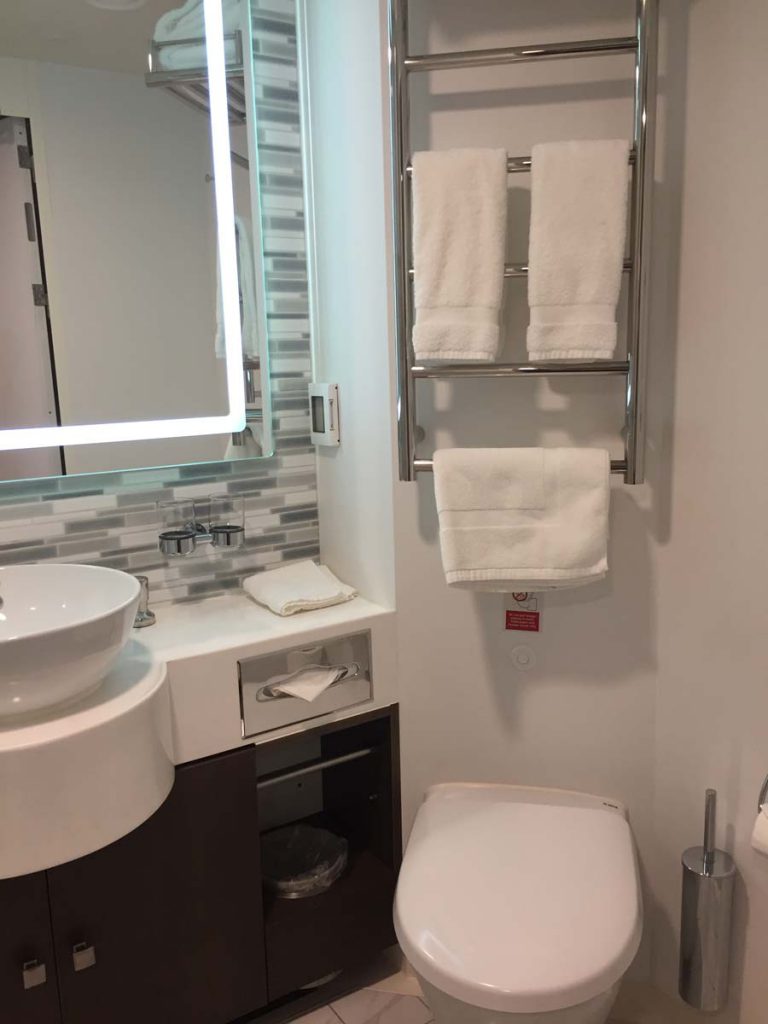
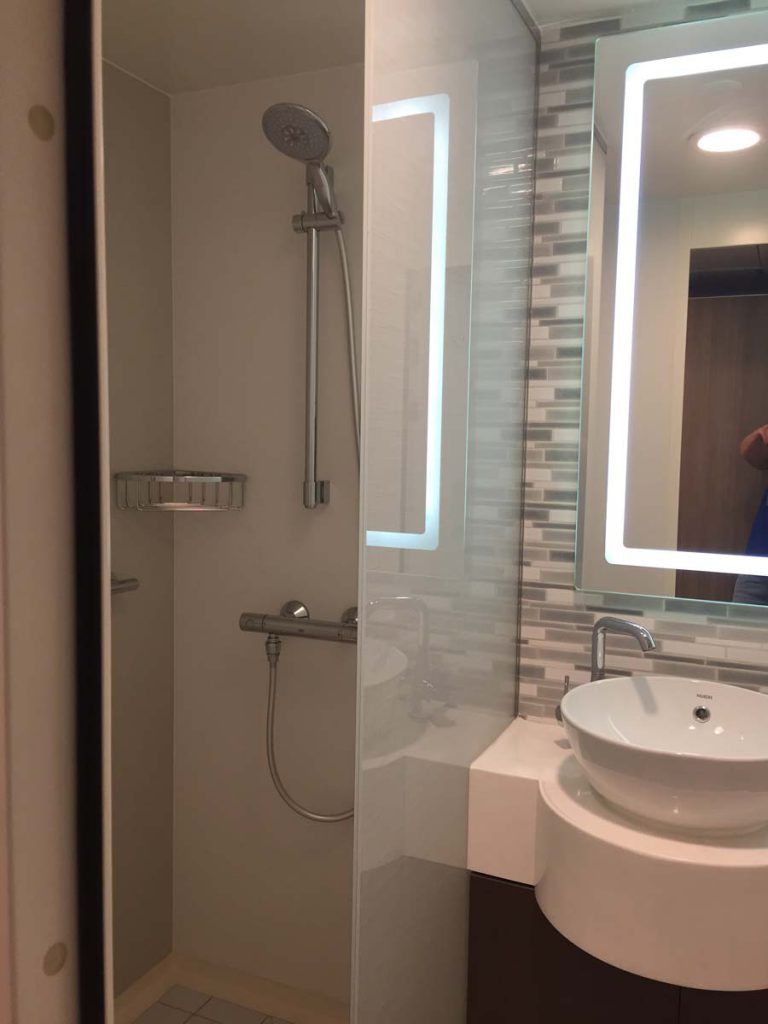
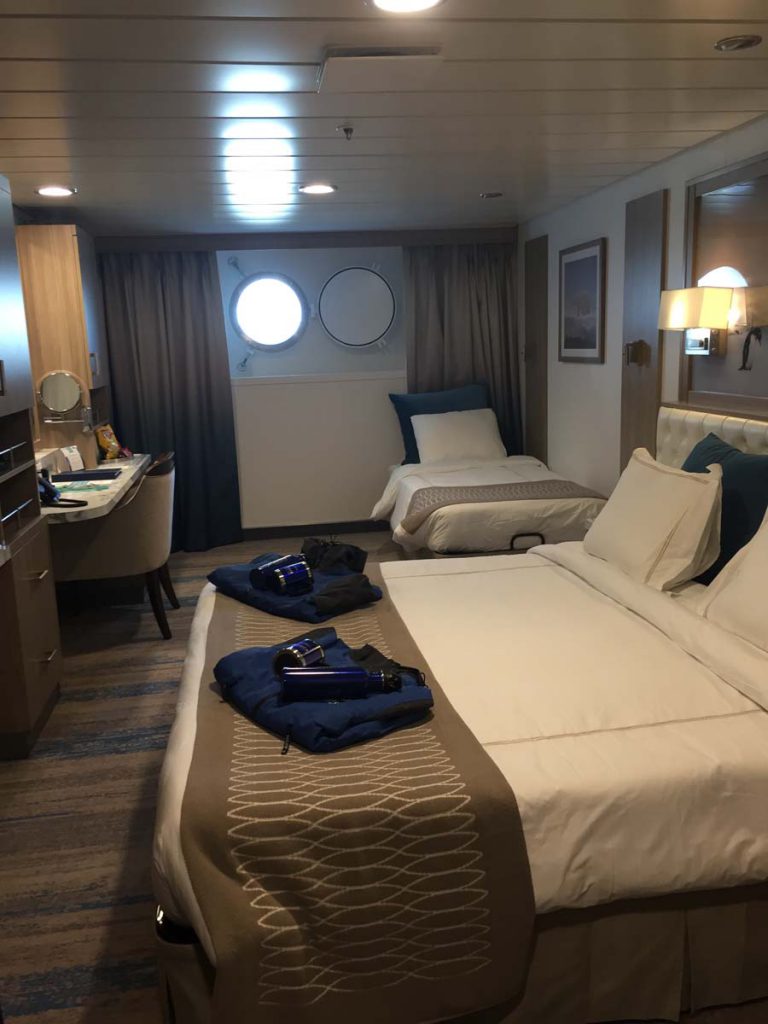
You can view details of the Greg Mortimer by clicking this link – https://www.wildfoottravel.com/destinations/antarctica/vessels/greg-mortimer.
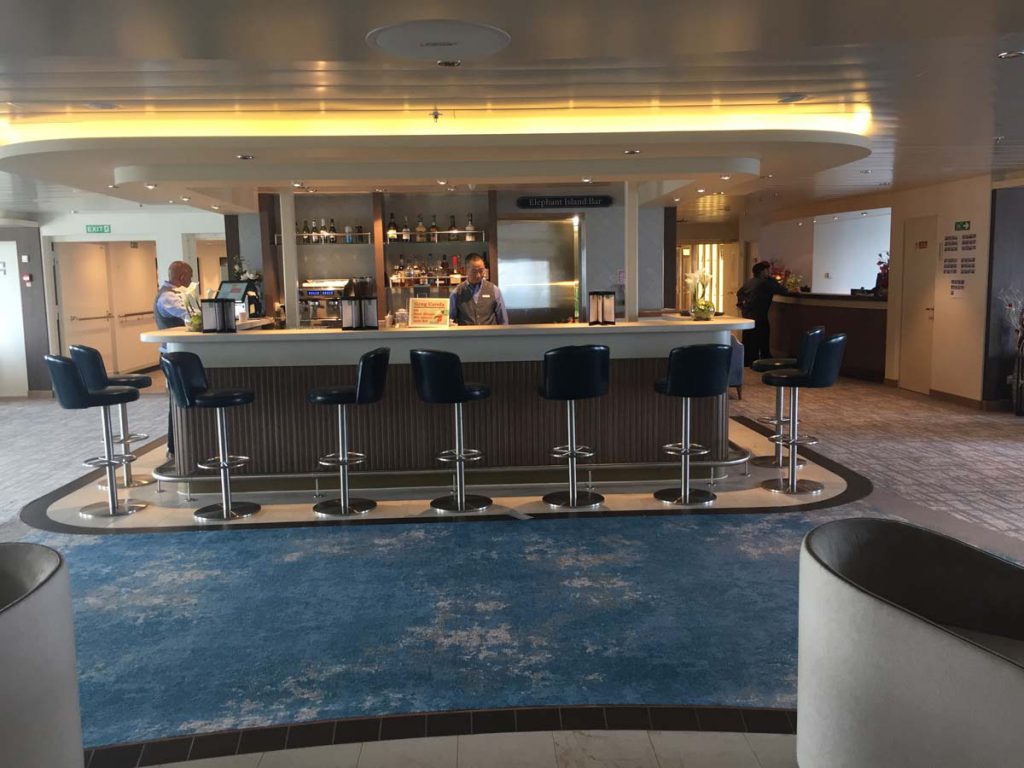
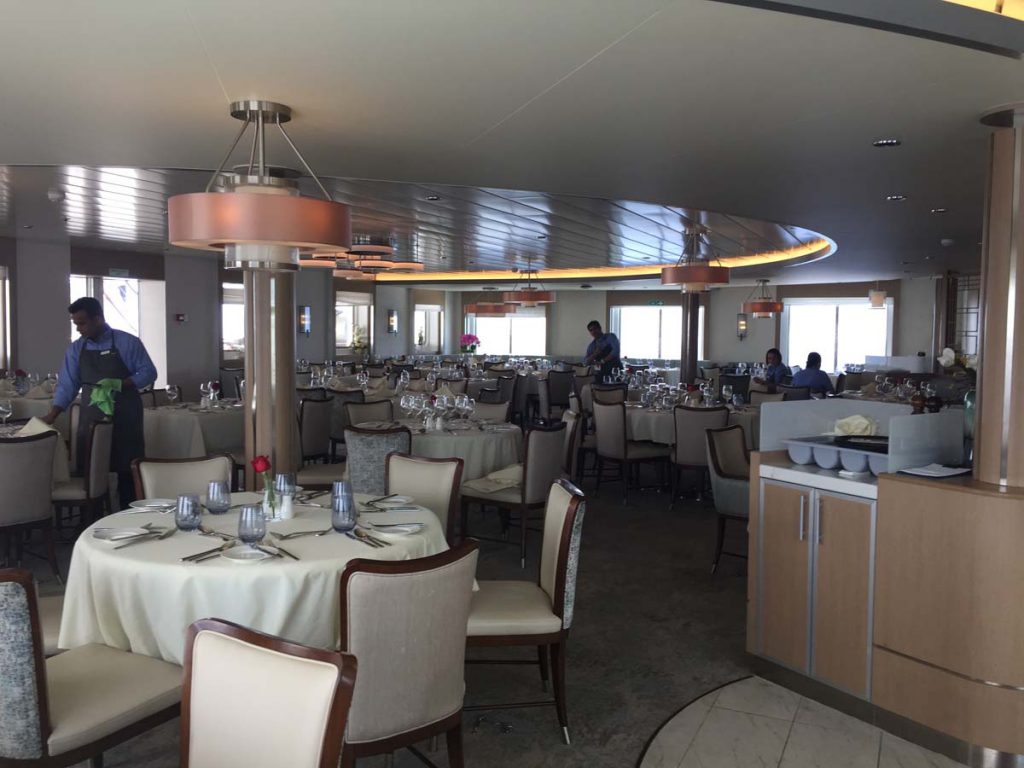
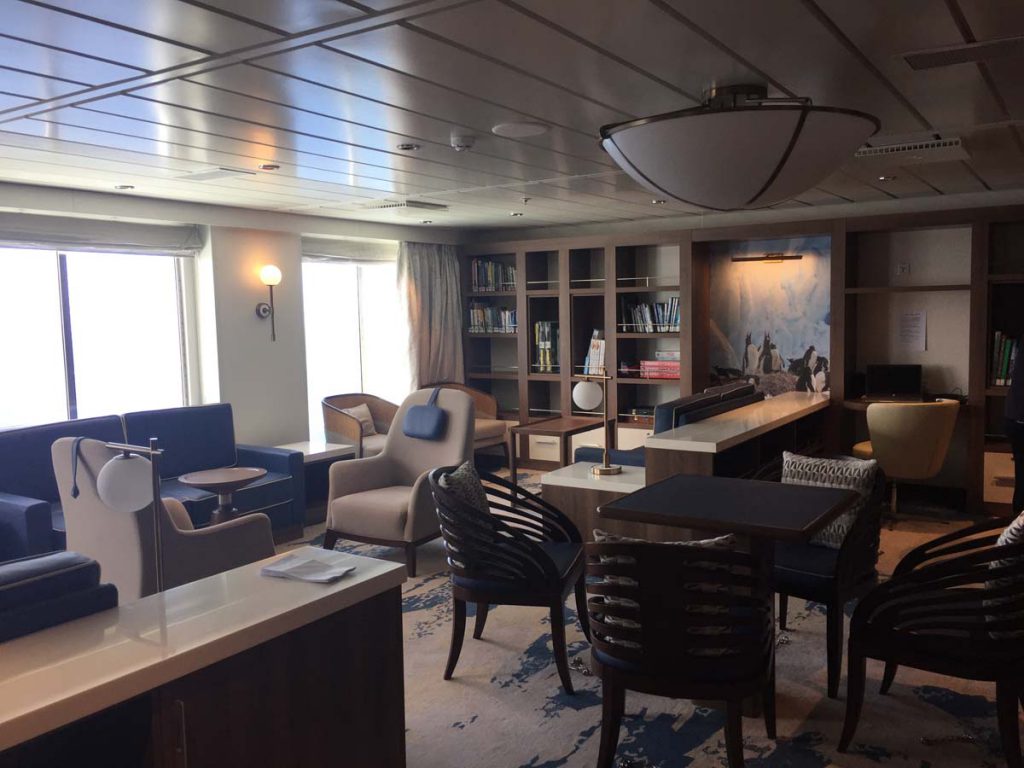
What I would like to focus on are the “green” credentials of the Greg Mortimer. Most people these days are aware of climate control and carbon emissions. Aurora, the company who permanently charters the Greg Mortimer, takes every opportunity to explain the fragile ecosystems you will encounter on an Antarctica adventure. Passengers are fully briefed on environmental guidelines, and the scientific reasons behind them, right at the start of the voyage. Their experienced guides demonstrate how to observe wildlife in ways that cause minimum impact. The environmental education continues on shore, as the more that these remote area specialists share their knowledge about the natural environments we encounter, the more rewarding an Antarctica adventure will be.
The Greg Mortimer gives off 80% less emissions into the air and sea with her Tier 3 engine using lower energy consumption. She has high fuel efficiency, reduced light pollution for minimal wildlife disruption, and lower on-board plastic use. Furthermore, the ship has state-of-the-art virtual anchoring technology, meaning it can hold its position using its own propellers and thrusters, while launching Zodiacs and kayaks without disturbing the sea floor. Virtual anchoring technology means no more anchors and chains dropping to the sea floor.
Water filtration is done on board, cleaning products are biodegradable and phosphate-free, and seafood is sustainably sourced and meets Marine Stewardship Council Fisheries standards. Elsewhere, the line’s sustainability record is good. In Svalbard, for example, participation in annual clean-ups has helped remove 20 tons of waste from beaches.
Kayaking
During our first day of crossing the Drake Passage, the kayakers were asked to stay behind after the IAATO guidelines talk that was given during the afternoon session. Al, the kayak team leader, ran through the list of outerwear that they provide, and the base layers they suggest you wear each day. I was surprised as to how many layers they suggested and was a bit worried that I hadn’t taken enough clothes with me. However, I needn’t have worried. The suggestion is that you wear two base layer tops and three base layer bottoms, plus two pairs of socks, a warm hat, a neck warmer, sunglasses and sunblock. I only wore two bottoms and I was warm enough, but I wore merino wool next to my skin on both upper and lower body. I really think this helped me to keep warm, as I didn’t suffer from the cold.
The following day we had another announcement, asking us to be in the mud room for 10am. We were kitted out with our drysuits and all the other equipment that we were going to need over the next few days – red and black suits for the men, and green and black for the ladies. I had expected to wear ski gloves whilst kayaking in Antarctica, so I had taken two pairs with me, plus some liner gloves so that I had at least one dry pair. However, the poggies that were supplied were fantastic. Even on the coldest days, these kept my hands lovely and warm. I did take a pair of gloves in my dry bag though, as when you went ashore, your hands got cold very quickly.
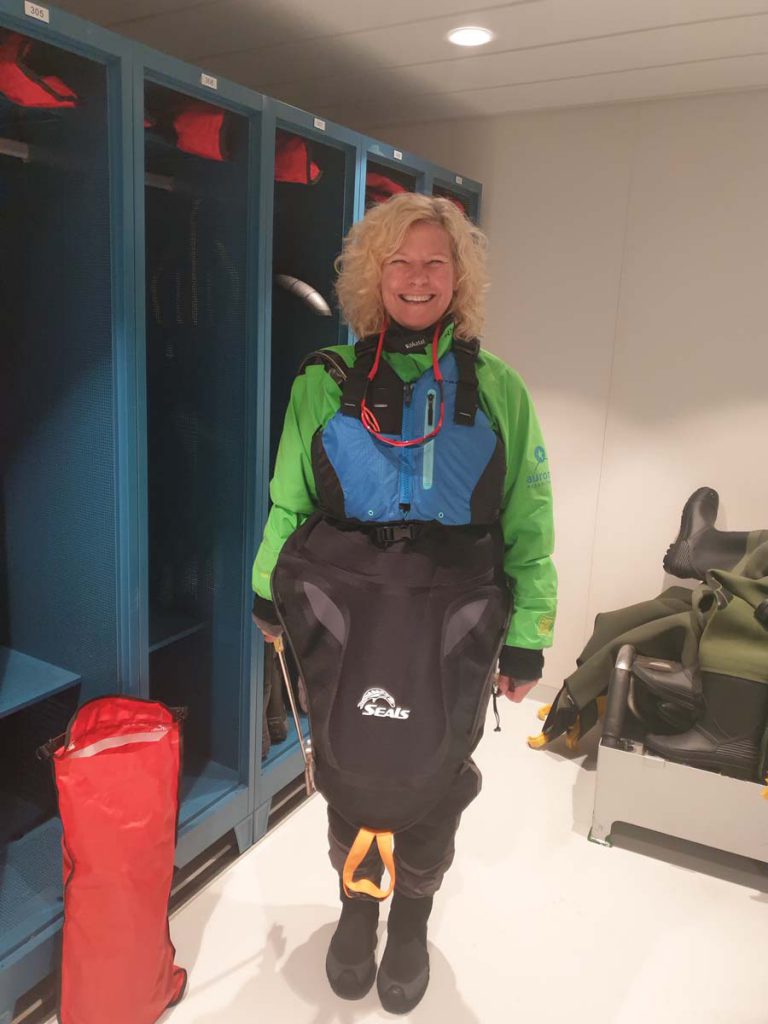
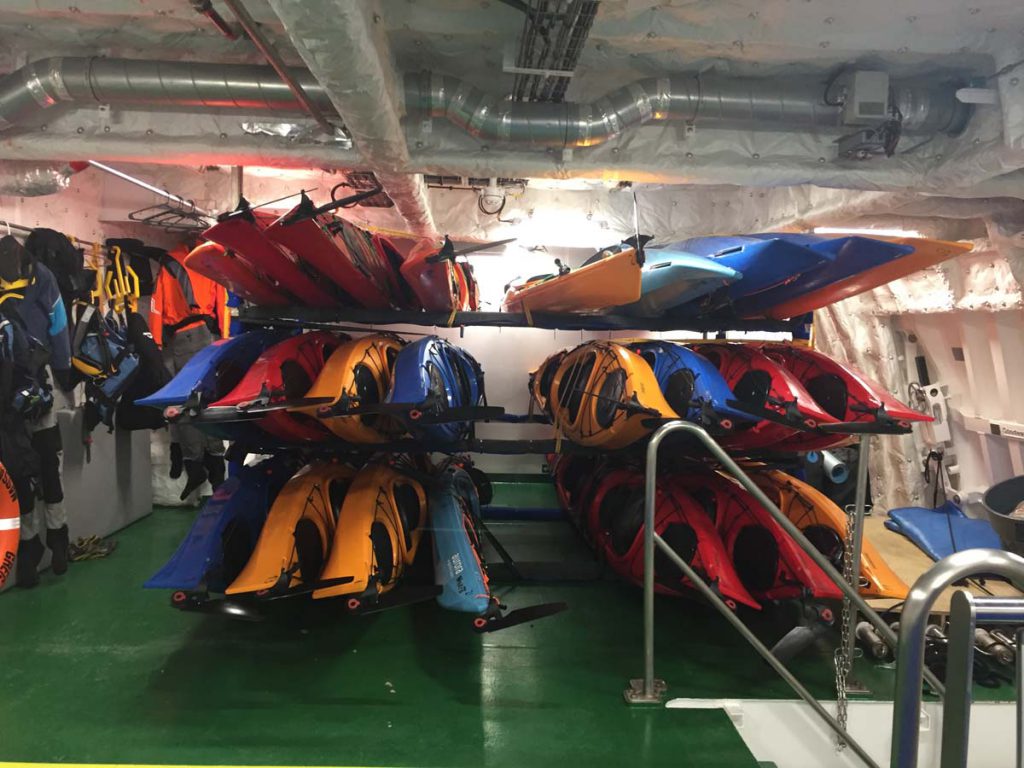
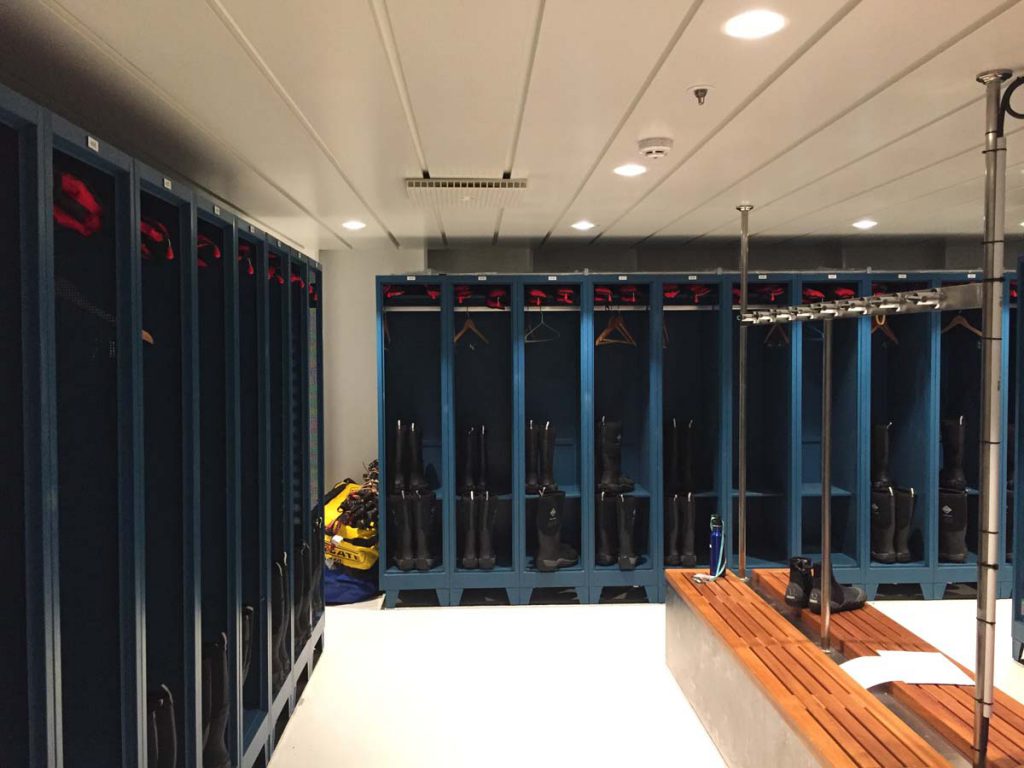
The mudroom and kayak room were to become my second home for the next six or seven days of our Antarctica adventure. They are located at the very back of the ship on Deck 3, although you access them via Deck 4 and down some steps. The mudroom has plenty of lockers where you hang your outside clothes and mud boots – you are allocated your locker by cabin number. Anyone that is going to go out on the zodiacs also uses the same mud room, so to avoid the congestion of 120 passengers all getting changed at the same time, you are called down in groups. The activities people were called first, followed by either portside or starboard for the zodiacs.
Passengers going out by zodiacs swipe their cabin card with one of the members of crew and leave the ship from one of the side openings. The opening isn’t quite level with the sea, so you have a couple of steps to descend onto a narrow, solid platform and then slide into the zodiac and off you go. It’s important to remember to wash and disinfect your boots when you get back onboard and swipe your card to say that you’re back on the ship.
For kayakers, we exit through the very back of the ship. There is a room beyond the mudroom where all the kayaks are neatly and safely tied up and stored away until they are needed. This is where you hang your drysuit, kayak skirt and PFD (personal flotation device). Your paddles and poggies (light, neoprene mitts which attach to your paddles via Velcro) are also stored here.
Tuesday November 12th was to be our first kayaking outing. That morning we had been up on deck watching Captain Oleg navigate his ship through the MacFarlane Strait, arriving into the South Shetland Islands just before lunch. Very few of the crew had sailed through this narrow strait before, so everyone was up on deck watching the ship being expertly guided.
Once we had eaten lunch, we made our way to the mudroom to force ourselves into our drysuits. We all waited rather nervously, not really knowing what we were supposed to do next, and therefore it took some time to get us all into kayaks. We watched as each kayak was lowered into the sea from the back of the ship and, individually, we made our way out of the mudroom into the kayak room.
We already knew who we were kayaking with and which kayaks we had been assigned to, so when it was our turn we grabbed our paddles and poggies and made our way down the steps and into the zodiac. Whilst we waited, the kayak was lowered over the zodiac and into the water. We then sat astride the seat, before lowering ourselves into the kayak. Now, I have never done this in open water before, so I was a bit apprehensive about falling into the freezing cold sea, but the guides hold the kayak steady for you and it’s really easy to slide yourself in. Getting the skirt on took a little bit of getting used to, as you are floating in the sea, but we soon got the hang of it and it just became second nature after a couple of goes.
Half Moon Island was our destination and I was so excited to see my first chinstrap penguins swimming and porpoising around us in the waters. There were many skuas and shags flying above our heads, but we needed to concentrate on our paddling as the sea was fairly choppy. After about 90 minutes of paddling, we made a landing on Half Moon Island. Pulling our kayaks out of the water, we went for a little stroll in the deep snow, whilst sipping our much appreciated hot chocolate and eating our cookies.
We had only been on land for about 10 minutes when Al got a message from the bridge advising that bad weather was coming in quickly, so we immediately headed back to our kayaks, put our gear back on, and started paddling back towards the ship. Unfortunately, the wind became super strong within just a few minutes of leaving the shore and the waves got higher, which made paddling extremely difficult. To make matters worse, my paddling partner became exhausted and stopped paddling. After a few minutes of struggling to paddle a double kayak alone, one of the support kayaks pulled alongside us and asked if we were OK. My partner requested that we return to the ship in his kayak so, much to my disappointment, we clambered into the zodiac from our kayak, pulled it onboard, and set off towards the ship.
Just 300 metres from the ship the zodiac broke down! Ben called for assistance from the bridge but nobody was immediately available. We were now in a snow blizzard and the other kayakers, although finding the paddling extremely tough, were at least making progress. Then the wind turned against us, pushing the zodiac and the kayakers further from the ship. As we drifted away from the ship, another zodiac came to our rescue and towed us back. As quickly as the wind got up, it dropped again, and the kayakers eventually made it back to the ship absolutely exhausted.
That evening, Al told us that this had been the toughest “first day” outing that he had experienced in 20 years of kayak guiding!
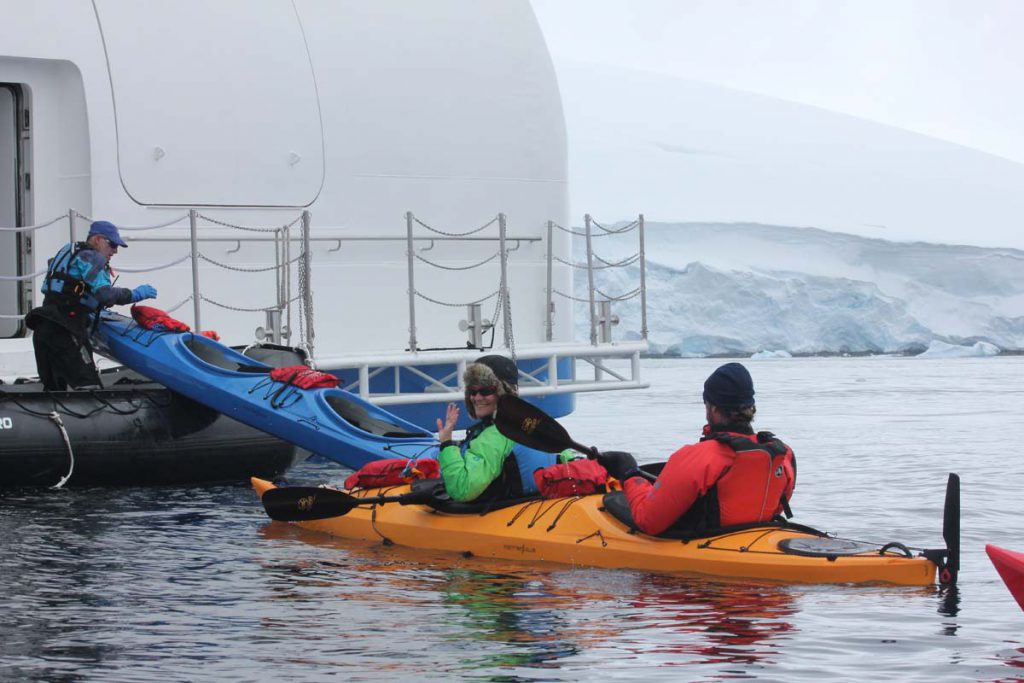
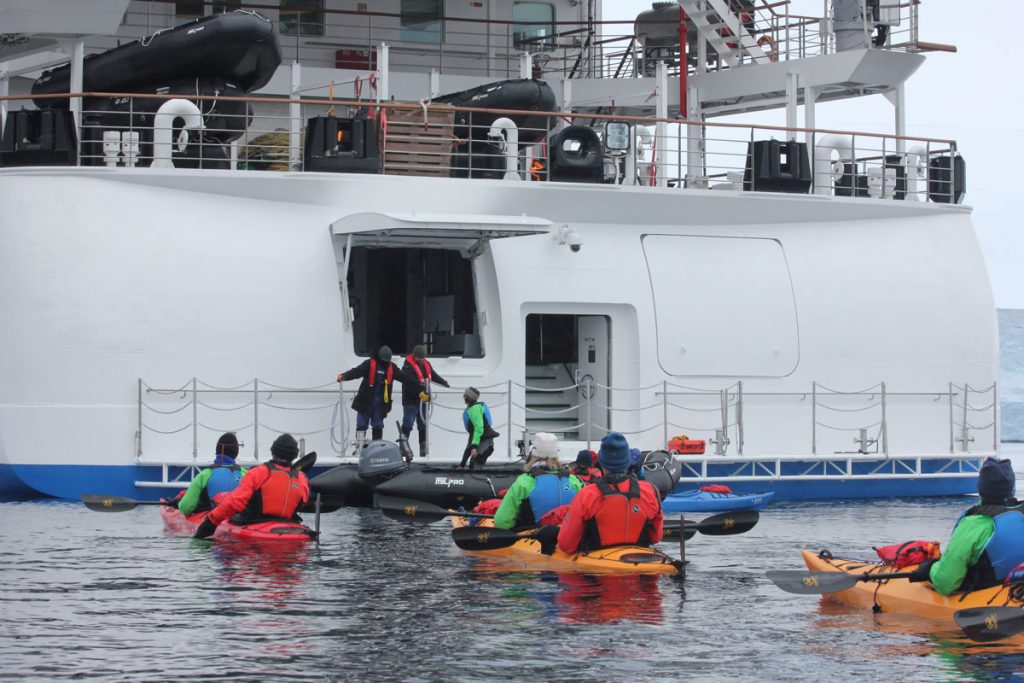
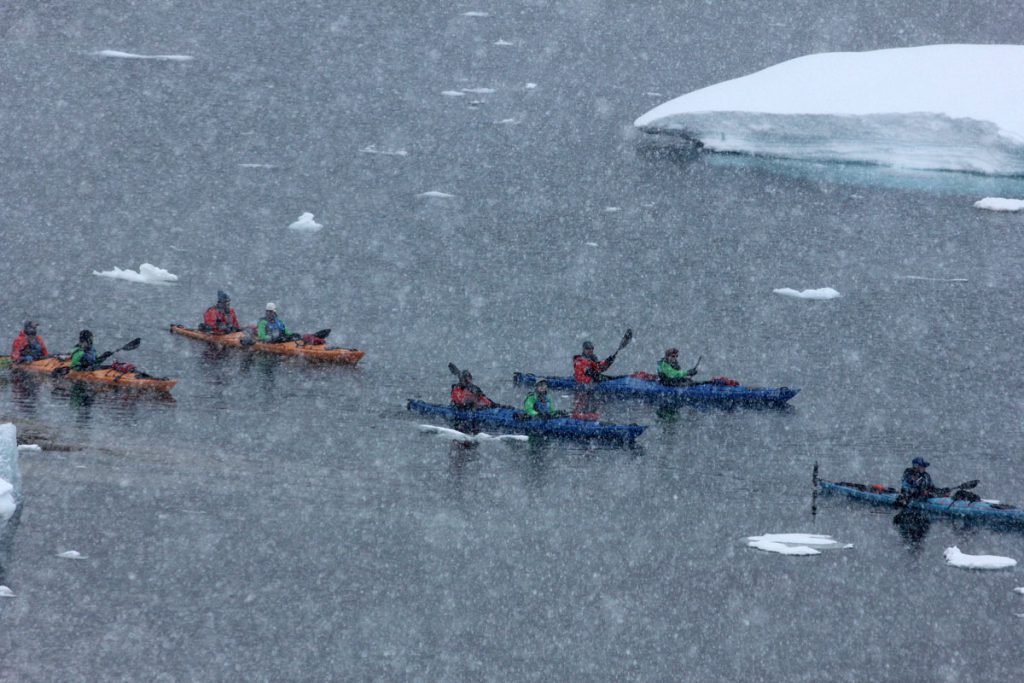
Luckily, that was the only day we experienced rough seas and wind on our Antarctic adventure. The following kayak excursions were perfect – flat seas, sometimes blue skies and sunshine, sometimes fresh snow.
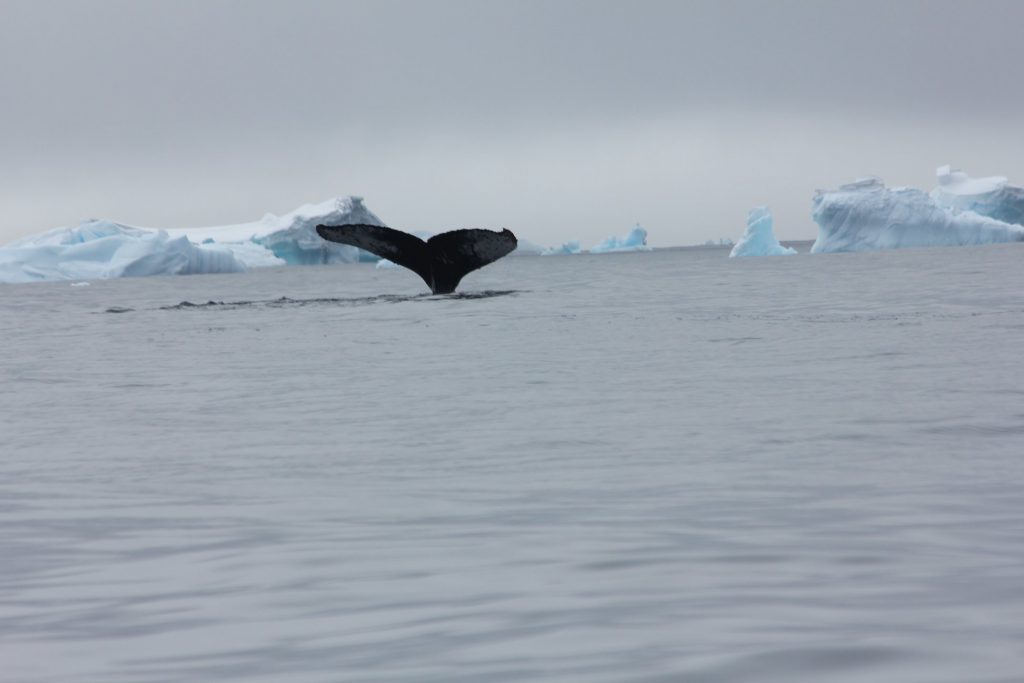

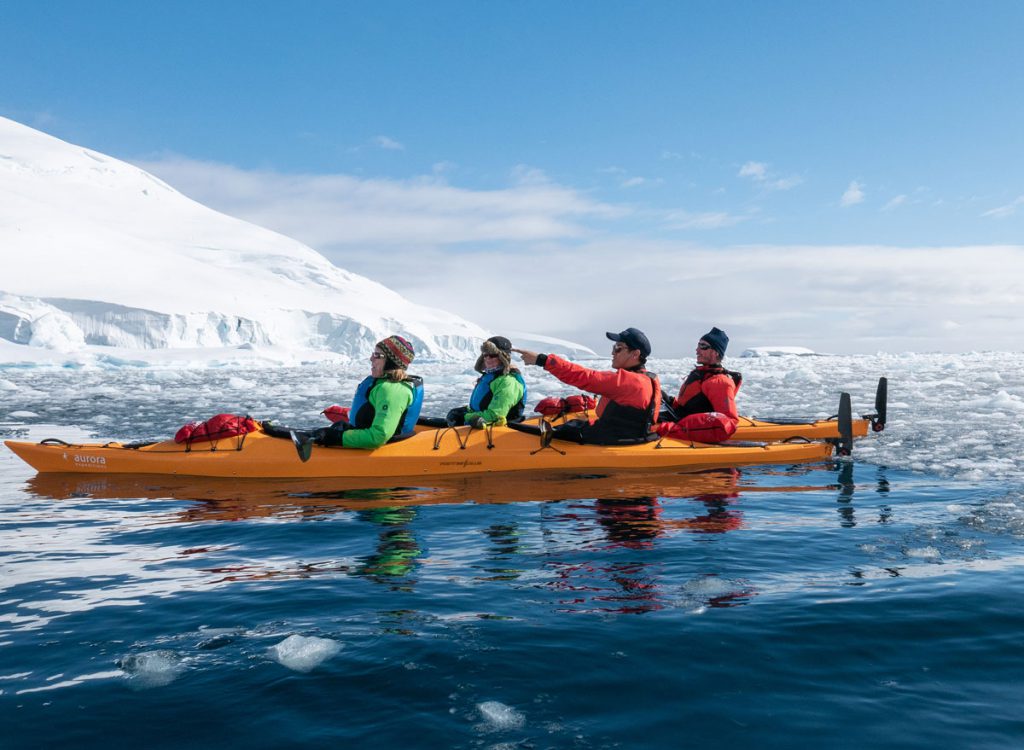
Over the next few days, we kayaked around Hydrurga Rock, Portal Point – our first continental landing. Then Cuverville Island, Plenau, Paradise Harbour – our second continental landing. We had penguins swimming around our kayaks on every excursion that we went out on. At Portal Point we had a wonderful afternoon paddling as snow fell all around us. I was soaking up the scenery and enjoying the peace and quiet that surrounded us, when all of a sudden a leopard seal popped its head out of the water, eyed us all watching in awe, and then just slipped back under the water as quickly as he had appeared.
During our fantastic days of kayaking, we were privileged to witness crabeater seals and Weddel seals bathing on ice floes, Gentoo penguins dancing their courtship dances whilst floating on the ice floats, and I never got tired of watching the penguins porpoising through the water with such ease. We learned how to navigate our kayaks through the ice and around the most stunning glaciers and ice sculptures, and listened to the ice crackling and popping all around as we slid our kayaks over. In the far distance we could hear calvings taking place, although we didn’t witness any, and saw the snowshoers and skiers hiking their way up the mountains.
This extra activity that I opted to do on my Antarctica adventure was worth every single penny, and I urge anyone with the slightest inkling of kayaking to give it a go. You really won’t be disappointed.
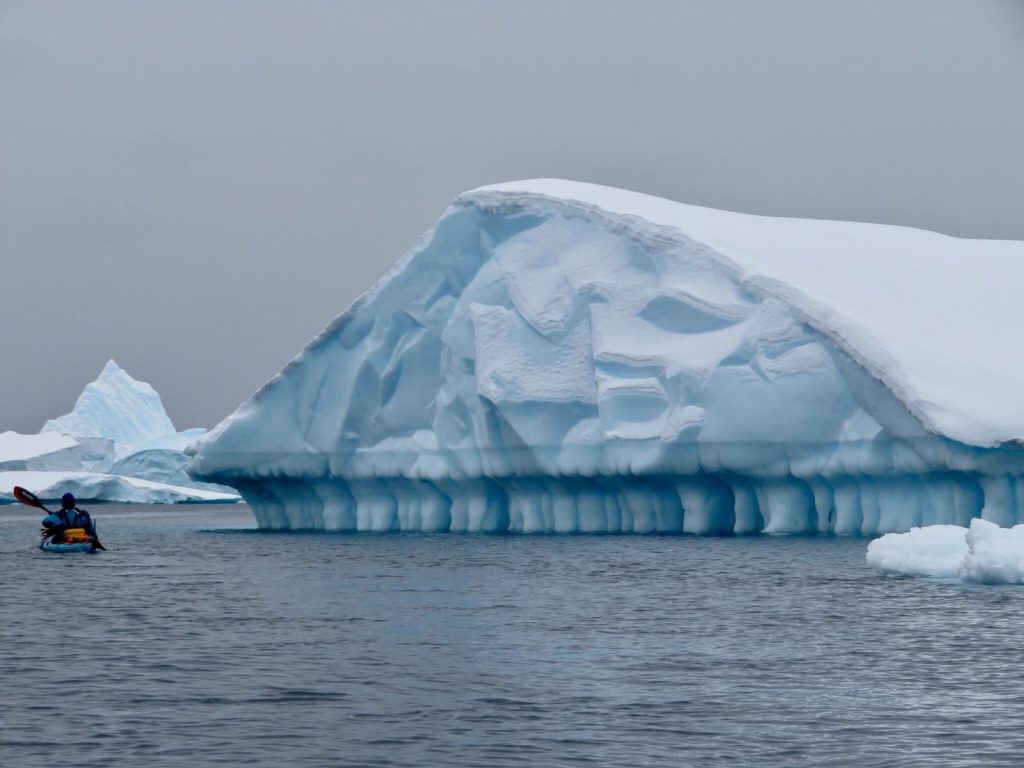
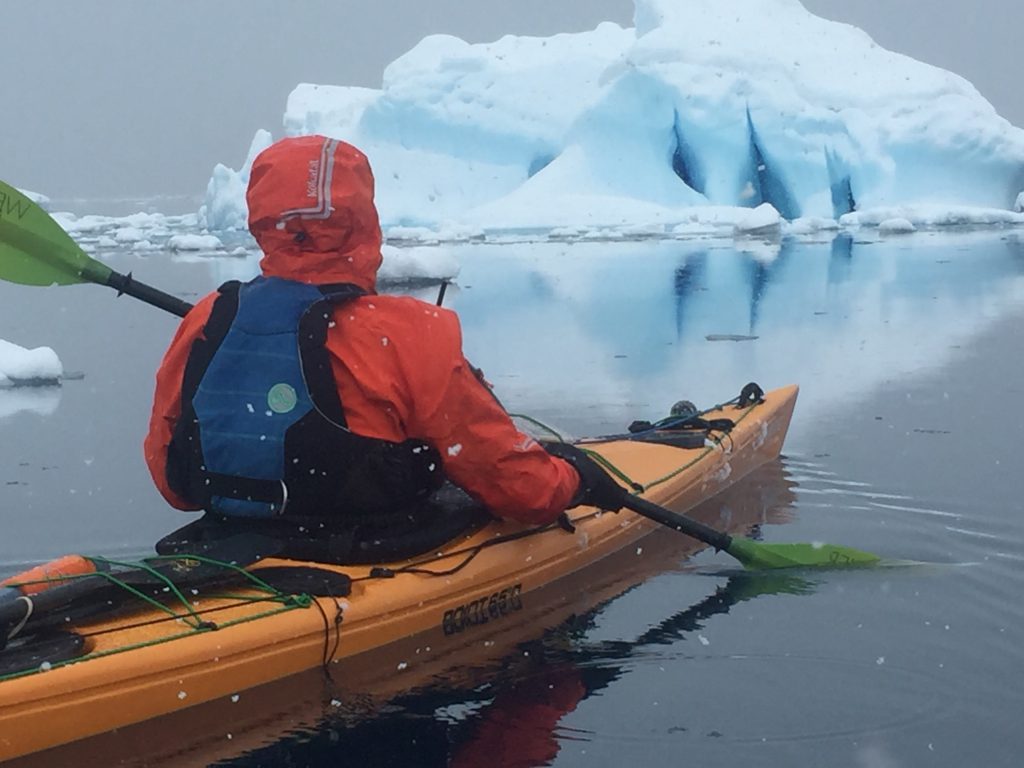
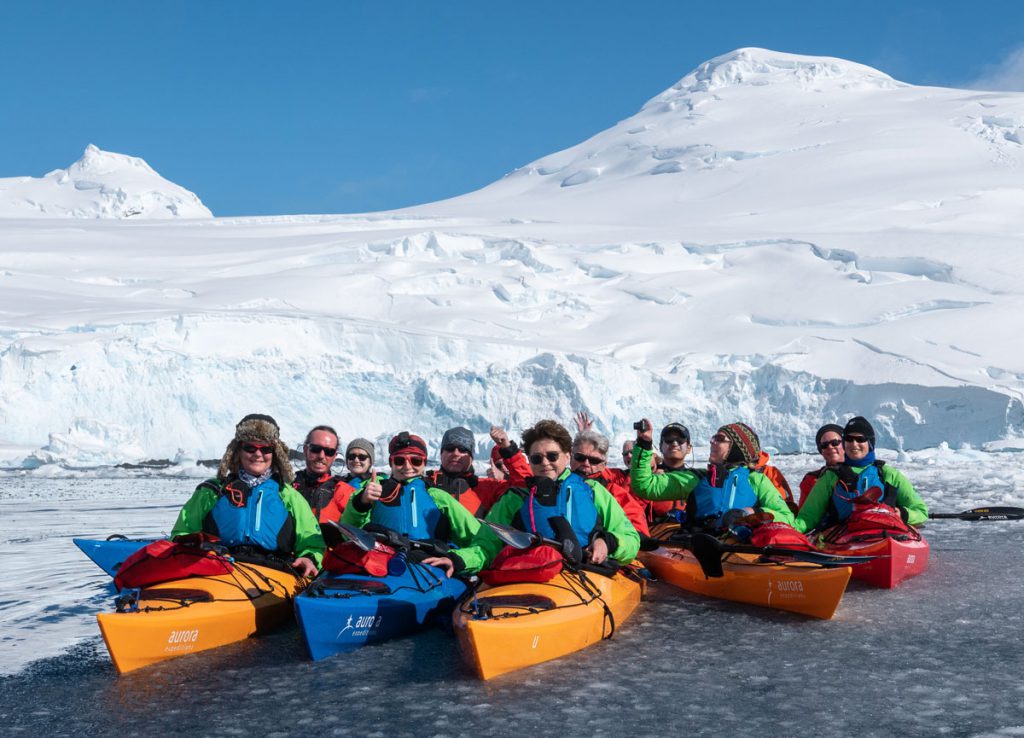
People are already asking me how I feel after my trip to Antarctica. Well, this place stole my heart. It shook me to the core with its beauty, its serenity and its wildlife. It turned my life upside down and made me wish that I was 30 years younger so that I could plan my career all over again and work on one of these expedition ships.
As we sailed back towards Ushuaia over the Drake Passage, I was already planning how I could get to visit this magical continent again. I really hope I will be back for another Antarctica adventure one day.
Our Favourite Holidays for Kayaking
Inspired by hearing about this incredible Antarctica adventure? Here are some of our favourite itineraries.
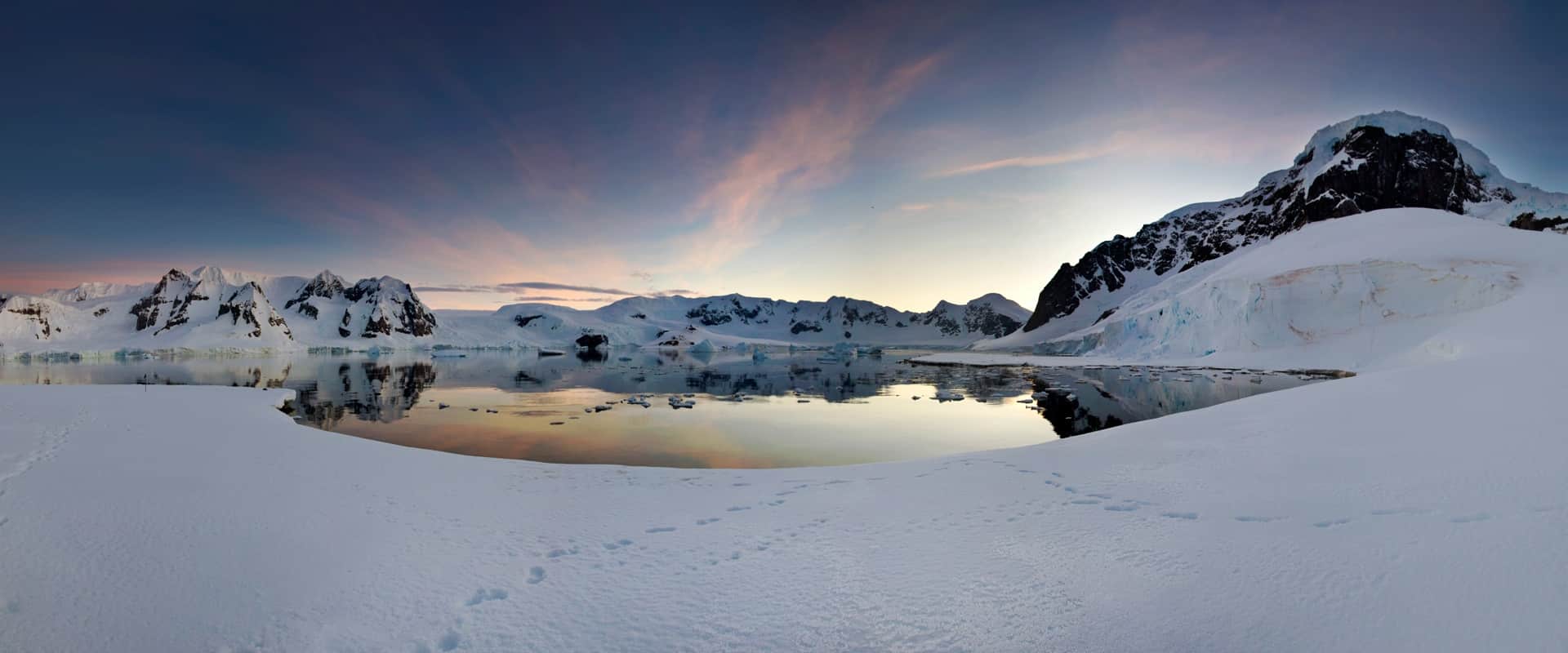
Shackleton Route from Montevideo (22 days)
Inspired by Shackleton’s legend, this itinerary delivers the best of this magnificent region, departing from Montevideo and sailing through the Falkland Islands, South Georgia and the Antarctic Peninsula. Encounter penguins, seals and much more in this extraordinarily biodiverse region.
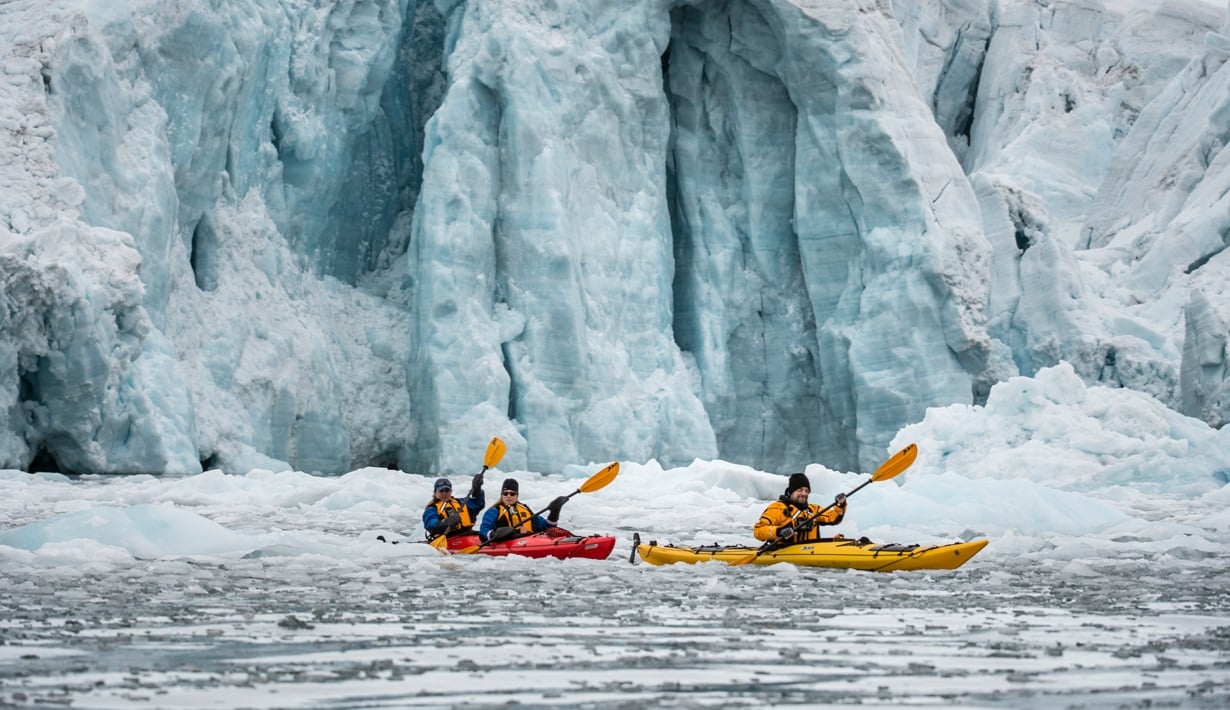
Luxury Falklands, South Georgia and Antarctica (23 days)
Soak up incredible scenery and outstanding wildlife as you journey through these three iconic regions on a luxury vessel. Departing from Buenos Aires to Ushuaia, this unforgettable trip offers a new adventure at every turn.
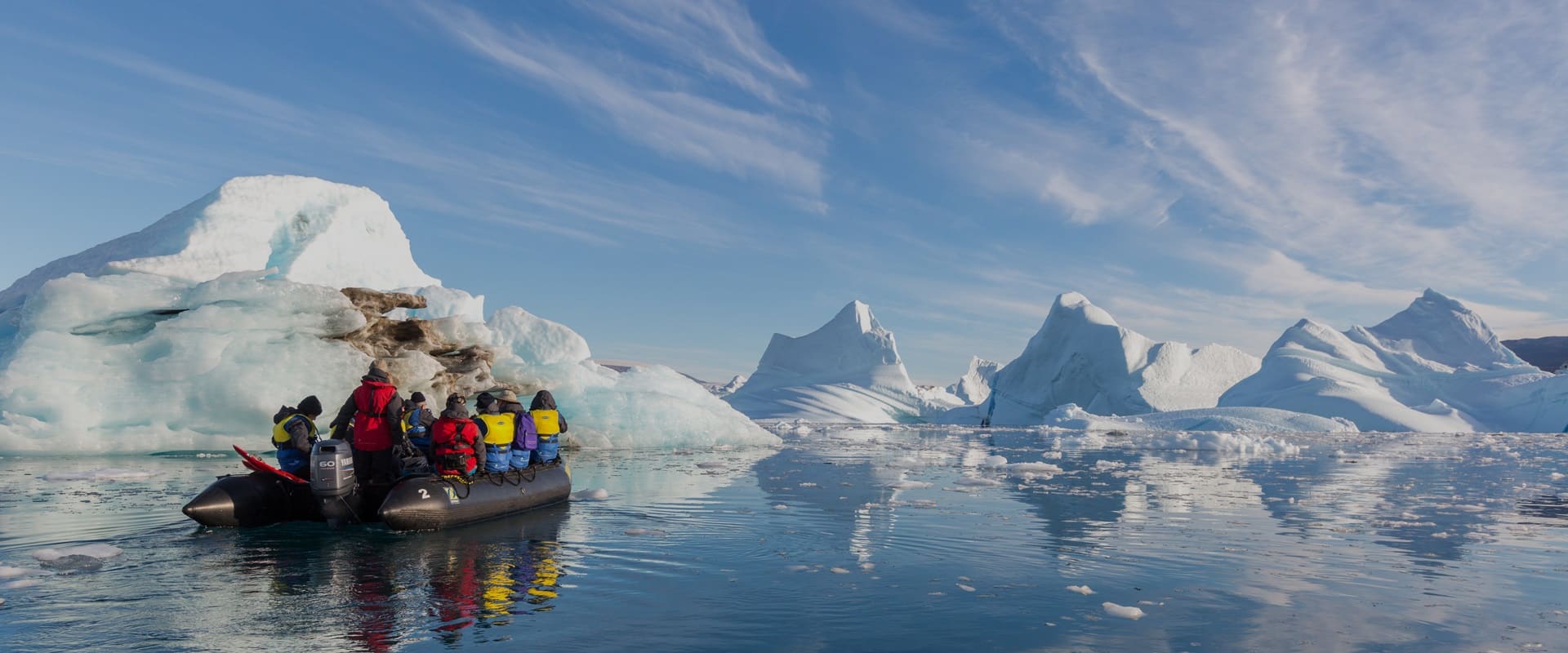
Spirit of Antarctica (12 days)
Come aboard a custom-built polar vessel for a thrilling adventure taking you through the pristine wilderness to encounter unique and abundant wildlife and an awe-inspiring landscape of towering icebergs. Enjoy a host of optional extra activities like Zodiac excursions and visits to historic sites.
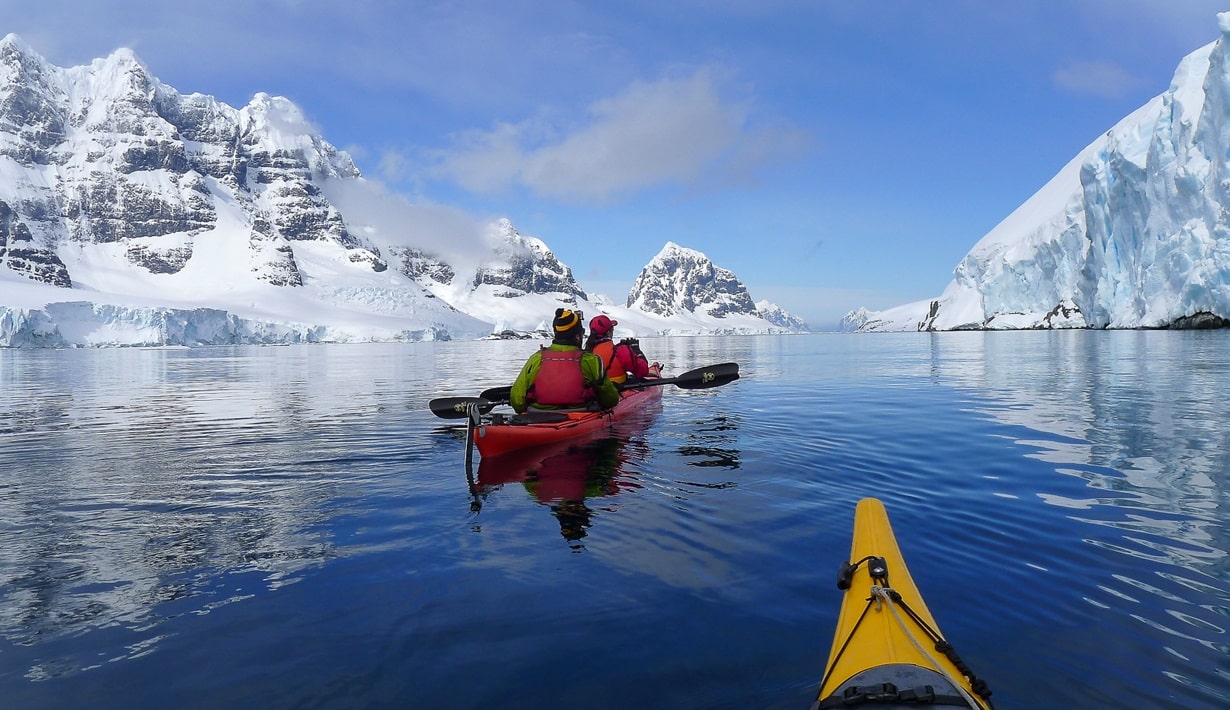
South Georgia and Antarctic Odyssey (21 days)
An absolutely epic expedition through the region, departing from and returning to Ushuaia. You’ll sail the famous Drake Passage and follow Shacketon’s path to encounter truly jaw-dropping scenery and a proliferation of wildlife like nowhere else on the planet.
